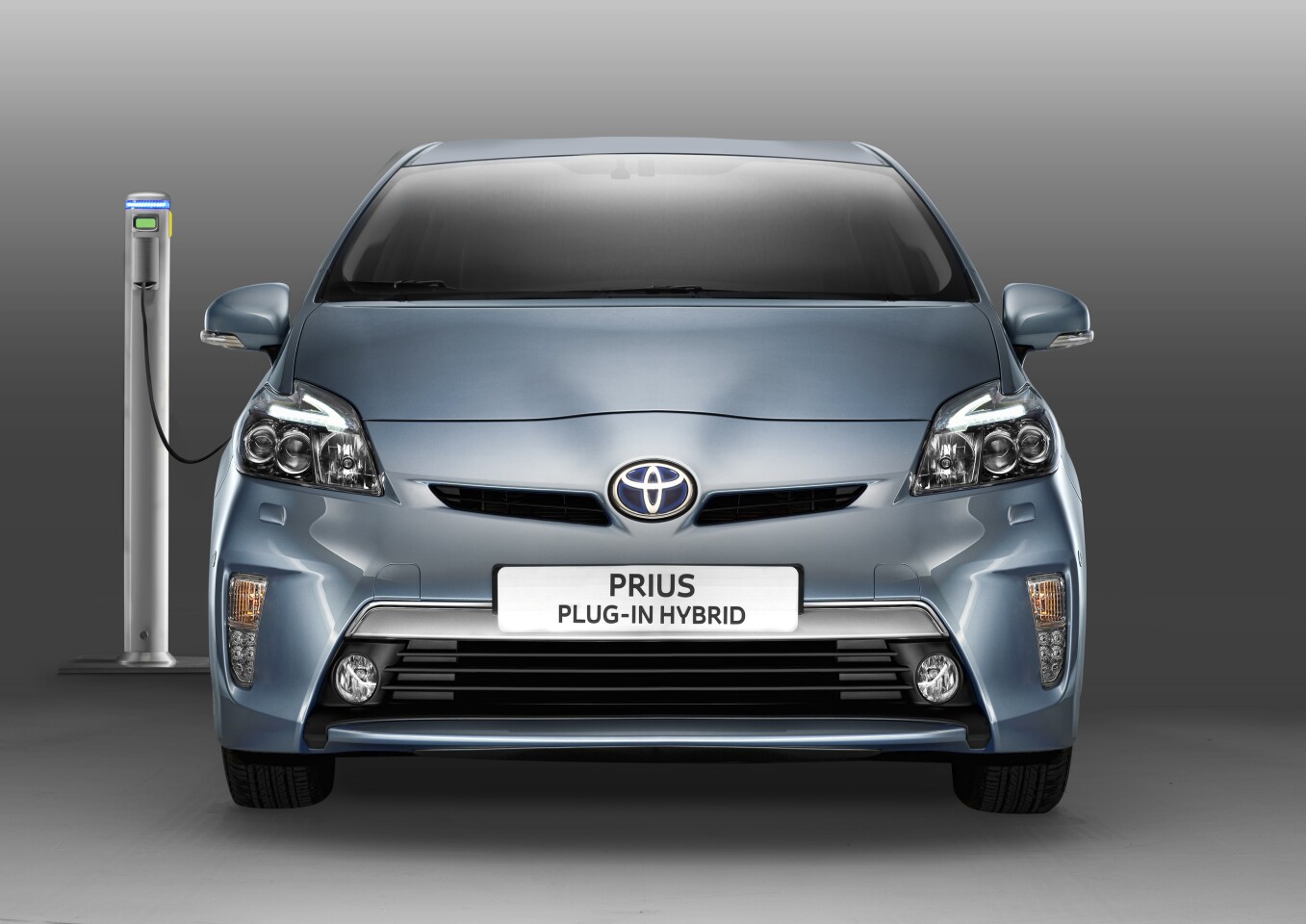Toyota is gearing up for a worldwide onslaught of hybrid vehicles in 2012 - part of a strategy to put out no less than ten new hybrids by 2015. By the early 2020s, the company most of the company's European models will feature a hybrid option.
To that end, the company has already begun launching hybrid versions of the Yaris light platform, the Auris/Corolla hatch and the medium Camry sedan in larger markets across the world - Japan, Europe and the US.
But the most prominent - and branding wise the most important - is the expanded Prius family. Thanks to the Prius name and its place as a standalone brand synonymous with the company's Hybrid Synergy Drive technology, Toyota has achieved higher brand recognition associated with hybrid drivetrains than any other marque.
Since launching the original Prius in 1997, the company has sold more than 3.3 million HSD-powered vehicles worldwide. Sales have risen exponentially with the release of each new generation, with the third incarnation, launched in 2009, accounting for nearly a third of total sales.
Toyota has calculated that in toto its Hybrid Synergy Drive fleet - Prius and other platforms - can claim responsibility for a reduction in automotive CO2 emissions of about 21 million tonnes since launch.
For the upcoming Prius, Prius+ and Prius Plug-in Hybrid, Toyota claims CO2 emissions of 89 g/km, 99 g/km and - potentially in the case of the latter - 49 g/km respectively. It expects the expanded range to yield commensurate expansions in the platform's customer base, with the Plug-in attracting a new group of early adopters and the Prius+ drawing in those needing a third row of seats.
Prius Plug-In Hybrid
Launched in production form at this year's Frankfurt show the Prius PHEV represents a simple advance over Toyota's standard hybrid formula by integrating a larger, independently chargeable Li-ion battery into the HSD drivetrain. But history will show it as a milestone in the Prius platform's progress for the way it takes it a step closer to full electrification. Toyota claims realistic fuel-efficiency targets of 49 g/km CO2 emissions and 134.5 mpg (that's 2.1 L/100km combined cycle) fuel consumption.

The Plug-in boosts the drivetrain's electric-only range from the normal Prius's 1-2 km to something in the order of 20 km. That makes it realistic all-electric drive in urban conditions - most commuter journeys cover 20 km or less - with the advantage of being able to revert to standard petrol-electric hybrid drive when the battery runs down or when the vehicle ventures on to the highway.
Also important to the package is a remarkably short recharge time of just 90 minutes, from flat to full, using a standard 220-240 volt domestic power outlet.
The car bears market significance on a couple of fronts, starting with its suitability for urban commuting at a time when Europe is becoming increasingly urbanized. It also represents a consumer-friendly stepping stone towards full electromobiity. It allows consumers a best-of-both-worlds option, making extensive use of electric power without the range disadvantages that see buyers unwilling to make the move to full-scale EVs.
The technology upgrade comes with minimal weight penalty - at 1420 kg, it's just 50 kg heavier than the regular Prius. Much of this is down to the battery pack upgrade. While other incarnations retain the proven NiMH battery chemistry used to date, the Plug-in adopts a new Li-ion battery boosting capacity from 1.3 to 4.4 kWh and nearly doubling weight from 42 to 80 kg.
The Prius Plug-in's combined 100 kW drivetrain makes it good for at 0-100 km/h in 10.7 seconds and a top speed of 180 km/h. Toyota's quoted 2.1L/100km and 49 g/km emissions come with the achievement of the car's full all-electric cruise range.
The Plug-in's option list includes an audio upgrade to JBL's GreenEdge system, featuring a high-efficiency amplifier and speakers that consume 50 per cent less energy than their conventional counterparts. the options list includes goodies like an to the standard touchscreen auxiliary controls and satnav.
The Prius Plug-in goes on sale in Japan, the US and Europe in early 2012.
Prius+ adds seven-seat MPV to lineup
The Prius+, meanwhile, sees Toyota extending the lineup to include a seven-seater. It's noticeably larger than the standard car - 30 mm wider, 85 mm taller and 155 mm longer. Half the extra length - 80 mm - goes into the wheelbase.While retaining the familiar HSD drivetrain, the Prius+ follows the Plug-in in moving to a Li-ion battery pack, albeit one not as big. Here it's done in the name of space efficiency, with the compact power pack installed under the centre console between the front seats to free up room astern.
The Prius+ is all about versatility, with the middle and back rows split-fold to open up options in carrying people and stuff. With all three rows up and occupied, there's 200 liters of cargo space astern. Drop the back row stowed and it rises to 505 liters.
Up front is the familiar 1.8-liter, 73 kW Atkinson cycle petrol engine and 60 kW electric motor. In total it's good for 100 kW, getting the Prius+ from 0-100 km/h in 11.8 seconds and on to a top speed of 170 km/h. Helped by a drag coefficient of just 0.28, Toyota claims combined cycle fuel consumption of just 4.2 L/100km and CO2 emissions of 99 g/km.
The panoramic sunroof uses resin instead of glass, delivering a weight saving of about 40 per cent.
Standard kit includes keyless entry, head-up display and LED headlamps.
Like the Plug-in, the Prius+ option list covers touchscreen control upgrades, JBL GreenEdge audio and as well as adaptive cruise and pre-crash safety systems.
Toyota expects to put the Prius+ to market in Europe in the first half of 2012.











